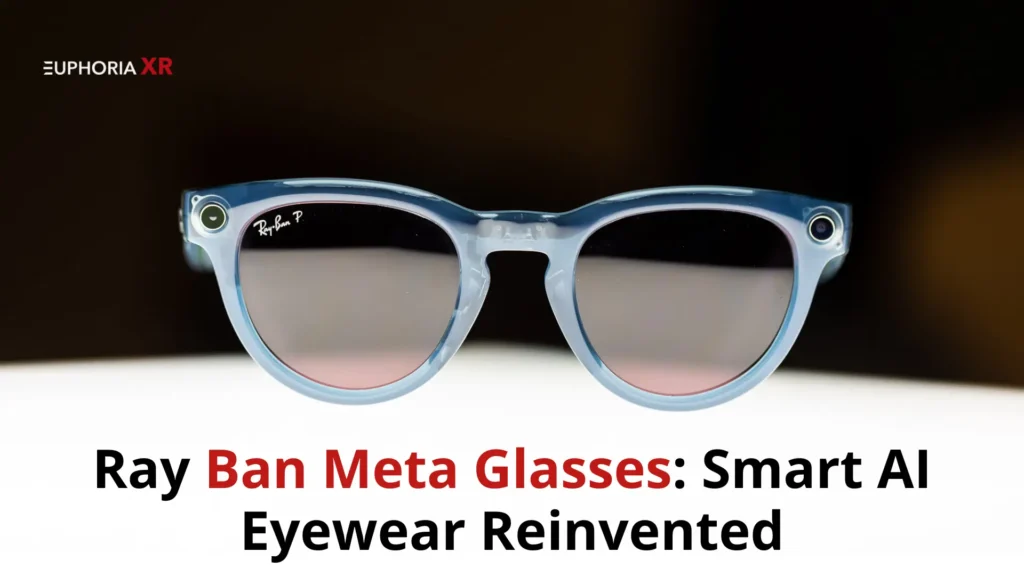“The Future is Here: Google’s New Augmented Reality Headset Explained”
We no longer identify augmented reality (AR) with science fiction. AR is changing industries at a startling rate, from improving education to changing how we shop online. With its Augmented Reality headset, which is predicted to revolutionize this field, Google is currently making yet another significant advancement. Let us examine the history of Google’s ambitious augmented reality project and its implications for the future.
A Walk Down Memory Lane: Google’s AR Journey
Google has experience with AR. Do you recall Google Glass? It was ahead of its time when it was launched in 2013—possibly too ahead. It found a niche in sectors like manufacturing and healthcare, but it did not quite take off in the consumer market.
Next came Project Tango in 2014, which concentrated on mapping physical environments with innovative sensors. Although Tango was discontinued in 2018, its fundamental concepts are still present in Google’s augmented reality platform, ARCore, which powers Google Lens and Google Maps’ real-time navigation.
With Project Iris, the eagerly awaited augmented reality headset, Google is now preparing for a resurgence. What is different about this current endeavor, though?
Project Iris: The Future of AR
According to reports, Google’s augmented reality headset, code-named Project Iris, is intended to smoothly blend the real and virtual worlds. According to early rumors, this headset will have an ultra-lightweight design, modernized screens, and sophisticated AI capabilities. In contrast to conventional AR Glasses, it offers an immersive experience that feels more like entering a new reality than wearing technology.
What we currently know is as follows:
-
Display Technology: To improve visual clarity, Google is making significant investments in microLED screens. The Verge reported that micro LEDs outperform OLED displays in terms of brightness, energy efficiency, and color accuracy.
-
AI Integration: Google’s Gemini AI, which blends sophisticated image recognition with natural language comprehension, is probably going to be used in Project Iris. Real-time object identification, language translation, and interactive virtual worlds might all be made possible by this.
-
Battery Life: In contrast to rivals, Google is emphasizing longer battery life to facilitate prolonged use. According to reports, early prototypes have a special external processing system that offloads work, keeping the device cool and light.
“Utilize Euphoria XR’s innovative Augmented Reality technologies to deliver next-level client engagement.”
Google’s Big Collaborations
It becomes even more fascinating at this point. Google is not the only company developing this Augmented Reality headset. The business has partnered with Qualcomm and Samsung, two industry titans. The smartphone will be powered by Qualcomm’s Snapdragon processors, with Samsung reportedly providing the physical components.
One of the main issues that AR is facing is the development of strong yet effective devices, which these collaborations seek to solve. The AR/VR market was expected to reach $296.9 billion by 2024, according to Statista, and Google appears committed to snagging a significant chunk of the market.
Challenges on the Road
Of course, there are difficulties with any innovative technology. Companies like Apple, which is expected to be releasing its own AR/VR headset shortly, and Meta, which has Quest headsets, are fierce competitors of Google.
Adoption by consumers is another obstacle. 58% of people are hesitant to invest in AR products because of their high pricing and limited use cases, according to a 2023 Deloitte survey. If Google wants Project Iris to succeed, these issues must be resolved.
Why Could Google’s Augmented Reality Headset Succeed?
Despite these obstacles, Google’s Augmented Reality headset has many advantages:
Proven AR Expertise:
The company has a solid foundation in AR technology, from ARCore to Google Lens.
AI Leadership:
Google can provide more intelligent and user-friendly augmented reality experiences using Gemini AI.
Ecosystem Integration:
To provide a cohesive experience, Project Iris could easily interface with Google Workspace, Android smartphones, and other services.
Consider holding virtual meetings with your coworkers as 3D avatars in your living room while wearing an Augmented Reality headset. Imagine being able to navigate a foreign city while seeing real-time translations. There are countless options.
What’s Next for Project Iris?
Although Google has not disclosed a release date, experts speculate that the headset may make its debut as early as 2025. Given these lofty goals, it is obvious that Project Iris has the power to completely change the way we use technology.
Do you want to use augmented reality to improve customer engagement? See how Euphoria XR can develop a customized solution for your brand.
Final Thoughts!
Google’s planned Augmented Reality headset offers a look into the future, not simply another device. This gadget has the potential to revolutionize education, entertainment, and productivity while also introducing augmented reality to the general public in ways that have never been seen before.
One thing is certain as Google keeps coming up with new ideas: augmented reality has a very promising future. Are you prepared to enter Google’s future vision?















